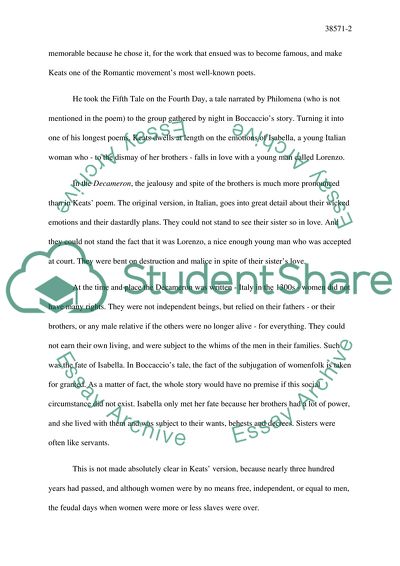Cite this document
(Growing Misery - Isabellas Tragic Tale Essay Example | Topics and Well Written Essays - 1500 words, n.d.)
Growing Misery - Isabellas Tragic Tale Essay Example | Topics and Well Written Essays - 1500 words. https://studentshare.org/literature/1731237-compare-the-story-of-isabetta-in-the-decameronfourth-day-fifth-story-and-keatss-poem-isabella-or-the-pot-of-basil
Growing Misery - Isabellas Tragic Tale Essay Example | Topics and Well Written Essays - 1500 words. https://studentshare.org/literature/1731237-compare-the-story-of-isabetta-in-the-decameronfourth-day-fifth-story-and-keatss-poem-isabella-or-the-pot-of-basil
(Growing Misery - Isabellas Tragic Tale Essay Example | Topics and Well Written Essays - 1500 Words)
Growing Misery - Isabellas Tragic Tale Essay Example | Topics and Well Written Essays - 1500 Words. https://studentshare.org/literature/1731237-compare-the-story-of-isabetta-in-the-decameronfourth-day-fifth-story-and-keatss-poem-isabella-or-the-pot-of-basil.
Growing Misery - Isabellas Tragic Tale Essay Example | Topics and Well Written Essays - 1500 Words. https://studentshare.org/literature/1731237-compare-the-story-of-isabetta-in-the-decameronfourth-day-fifth-story-and-keatss-poem-isabella-or-the-pot-of-basil.
“Growing Misery - Isabellas Tragic Tale Essay Example | Topics and Well Written Essays - 1500 Words”. https://studentshare.org/literature/1731237-compare-the-story-of-isabetta-in-the-decameronfourth-day-fifth-story-and-keatss-poem-isabella-or-the-pot-of-basil.


